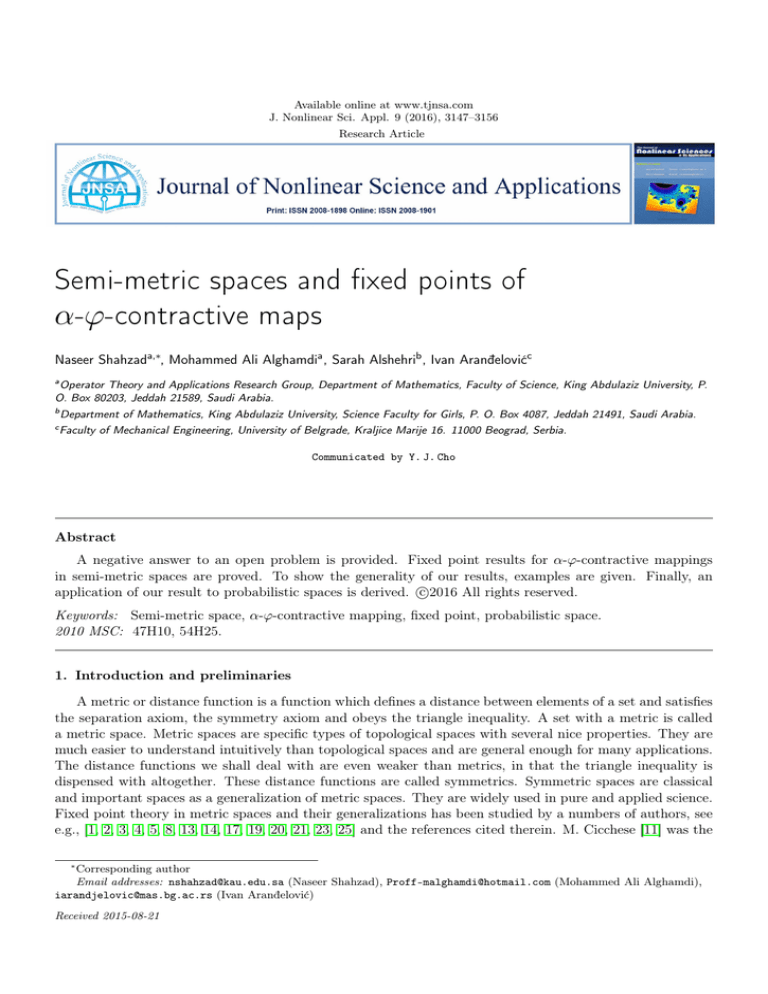
Available online at www.tjnsa.com
J. Nonlinear Sci. Appl. 9 (2016), 3147–3156
Research Article
Semi-metric spaces and fixed points of
α-ϕ-contractive maps
Naseer Shahzada,∗, Mohammed Ali Alghamdia , Sarah Alshehrib , Ivan Aranđelovićc
a
Operator Theory and Applications Research Group, Department of Mathematics, Faculty of Science, King Abdulaziz University, P.
O. Box 80203, Jeddah 21589, Saudi Arabia.
b
Department of Mathematics, King Abdulaziz University, Science Faculty for Girls, P. O. Box 4087, Jeddah 21491, Saudi Arabia.
c
Faculty of Mechanical Engineering, University of Belgrade, Kraljice Marije 16. 11000 Beograd, Serbia.
Communicated by Y. J. Cho
Abstract
A negative answer to an open problem is provided. Fixed point results for α-ϕ-contractive mappings
in semi-metric spaces are proved. To show the generality of our results, examples are given. Finally, an
c
application of our result to probabilistic spaces is derived. 2016
All rights reserved.
Keywords: Semi-metric space, α-ϕ-contractive mapping, fixed point, probabilistic space.
2010 MSC: 47H10, 54H25.
1. Introduction and preliminaries
A metric or distance function is a function which defines a distance between elements of a set and satisfies
the separation axiom, the symmetry axiom and obeys the triangle inequality. A set with a metric is called
a metric space. Metric spaces are specific types of topological spaces with several nice properties. They are
much easier to understand intuitively than topological spaces and are general enough for many applications.
The distance functions we shall deal with are even weaker than metrics, in that the triangle inequality is
dispensed with altogether. These distance functions are called symmetrics. Symmetric spaces are classical
and important spaces as a generalization of metric spaces. They are widely used in pure and applied science.
Fixed point theory in metric spaces and their generalizations has been studied by a numbers of authors, see
e.g., [1, 2, 3, 4, 5, 8, 13, 14, 17, 19, 20, 21, 23, 25] and the references cited therein. M. Cicchese [11] was the
∗
Corresponding author
Email addresses: nshahzad@kau.edu.sa (Naseer Shahzad), Proff-malghamdi@hotmail.com (Mohammed Ali Alghamdi),
iarandjelovic@mas.bg.ac.rs (Ivan Aranđelović)
Received 2015-08-21
N. Shahzad, et al., J. Nonlinear Sci. Appl. 9 (2016), 3147–3156
3148
first who obtained a fixed point theorem for Banach contractions in semi-metric spaces. Jachymski et al.
[16] gave an example of a fixed point free Banach contraction on a Hausdorff d-Cauchy complete semi-metric
space. They further observed that Banach’s fixed point theorem holds if d is also bounded. In this paper,
we provide a negative answer to an open problem and show that (W) and (CC) are independent conditions.
We prove fixed point results for α-ϕ-contractive mappings in semi-metric spaces generalizing the result of
Jachymski et al [16]. To show the generality of our results, we provide examples. Finally, we derive an
application of our result to probabilistic spaces.
A symmetric space (see [29]) is a pair (X, d) consisting of a non-empty set X and a function d : X ×X −→
[0, ∞) such that for all x, y in X the following conditions hold:
(W1) d(x, y) = 0 if and only if x = y;
(W2) d(x, y) = d(y, x).
Many notions and properties in symmetric spaces are similar to those in metric spaces. We recall some
notions from [15, 16].
Let (X, d) be a symmetric space. For ε > 0 and any x ∈ X, let Bd (x, ε) = {y ∈ X : d(x, y) < ε}. One
can define a topology τd on X by defining U ∈ τd if and only if for each x ∈ U , B(x, ε) ⊂ U for some ε > 0.
Definition 1.1 ([15]). A symmetric is called a semi-metric if for each x ∈ X and each ε > 0, Bd (x, ε) is a
neighborhood of x in the topology τd .
Definition 1.2 ([15, 16]). A sequence (xn ) ⊆ X is said to be d-Cauchy sequence if for given ε > 0 there is
N ∈ N such that d(xm , xn ) < ε, for all m, n ≥ N. Further, a symmetric space (X, d) is said to be d-Cauchy
complete if every d-Cauchy sequence converges to some x ∈ X in τd . (X, d) is called S-complete if for
every d-Cauchy sequence (xn ), there exists x ∈ X with lim d(xn , x) = 0.
n→∞
The following conditions are used as partial replacements for the triangle inequality in symmetric space
(X, d) :
(W3) ([29]) lim d(xn , x) = 0 and lim d(xn , y) = 0 imply x = y;
n→∞
n→∞
(W) ([22]) lim d(xn , yn ) = 0 and lim d(yn , zn ) = 0 imply lim d(xn , zn ) = 0;
n→∞
n→∞
n→∞
(CC) ([9, 10]) lim d(xn , x) = 0 implies lim d(xn , y) = d(x, y).
n→∞
n→∞
It is known [15] that for a semi-metric d, if τd is Hausdorff, then (W3) holds.
Definition 1.3 ([27]). By Φ we denote the set of all real functions ϕ : [0, ∞) −→ [0, ∞) which have the
following properties:
(i) ϕ is monotone nondecreasing.
(ii) lim ϕn (t) = 0 for any t > 0, where
n→∞
ϕn (t) = ϕ ◦ ... ◦ ϕ(t).
| {z }
n times
The function ϕ ∈ Φ is known as the comparison function (see [27]). The following lemma is an immediate
consequence of Definition 1.3 (see [27]).
Lemma 1.4. If ϕ ∈ Φ, then ϕ(t) < t for all t > 0 and ϕ(0) = 0.
N. Shahzad, et al., J. Nonlinear Sci. Appl. 9 (2016), 3147–3156
3149
Definition 1.5 ([28]). Let (X, d) be a symmetric space. A mapping f : X → X
contractive if there exist two functions α : X × X −→ [0, ∞) and ϕ ∈ Φ such that
is said to be α-ϕ-
α(x, y)d(f (x) , f (y)) ≤ ϕ(d(x, y))
(1.1)
for all x, y ∈ X.
Remark 1.6. Every Banach contraction in a semi-metric space is an α-ϕ-contractive with α(x, y) = 1 and
ϕ(t) = kt for all t ≥ 0 and some k ∈ [0, 1). But the converse is not true in general (see Example 1.8).
Definition 1.7 ([28]). Let f : X → X be a given self mapping and α : X × X → [0, ∞). We say that f is
α-admissible if x, y ∈ X and α(x, y) ≥ 1 implies α(f (x), f (y)) ≥ 1.
Example 1.8. Let X = { n1 : n ∈ N} ∪ {0}. Define d : X × X −→ [0, ∞) by
• d(0, 1) = d(1, 0) = 1;
• d( n1 , 1) = d(1, n1 ) = 32 , for n ≥ 2;
• d(1, 1) = 0;
and d(x, y) = |x − y|, for x, y ∈ X − {1}. Then (X, d) is a d-Cauchy complete semi-metric space (see [16]).
Let f : X −→ X be given by
if x = n1 , n is even
2x
x
if x = n1 , n is odd
f (x) =
2
0
if
x = 0.
Then, d(f 12 , f (0)) = d(1, 0) = 1 > 21 = d( 12 , 0). Therefore Banach’s fixed point theorem can not be applied
in this case.
Now, let α : X × X −→ [0, ∞) be a mapping given by
1
1
if x = n1 , y = 2n+1
, n is odd
α(x, y) =
0
otherwise.
For x = n1 , y =
1
2n+1 , n
is odd
x y 1
x y
1
α(x, y)d(f (x) , f (y)) = d( , ) = − = |x − y| = d(x, y).
2 2
2 2
2
2
The other cases are trivial since α(x, y) = 0. Hence f is an α-ϕ-contractive with ϕ(t) =
t
2
for t ≥ 0.
2. An Open Problem in Symmetric Spaces
It is known [6] that (CC) does not imply (W). The following question was put forth in [6, 7].
Problem 2.1. Let (X, d) be a symmetric space which satisfies (W). Does it satisfy (CC)?
We give a negative answer to the above problem.
Example 2.2. There is a symmetric space that satisfies (W) but does not satisfy (CC).
Proof. Let X = { n1 : n ∈ N} ∪ {0} and let d be given by
• d(0, 1) = d(1, 0) = 12 ;
N. Shahzad, et al., J. Nonlinear Sci. Appl. 9 (2016), 3147–3156
3150
• d(0, 0) = d(1, 1) = 0;
• for m, n ∈ N − {1}
d( n1 , 0) = d(0, n1 ) =
1
n
1
, d( n1 , 1) = d(1, n1 ) = 1 and d( n1 , m
) = n1 −
1
m .
Then (X, d) is a symmetric space that satisfies (W). But (X, d) does not satisfy (CC). To see this, let
xn = n1 , x = 0 and y = 1. Then
1
1
lim d( , 0) = lim = 0,
n→∞
n
n
n→∞
but
1
1
lim d( , 1) = 1 6= = d(0, 1).
n→∞ n
2
We note that (W) and (CC) are independent conditions.
3. Fixed Point Results
Theorem 3.1. Let (X, d) be a d-Cauchy complete semi-metric space satisfying (W3). Assume that f : X →
X is an α-ϕ-contractive mapping satisfying the following conditions:
(i) f is α-admissible.
(ii) There exists x0 ∈ X such that α(x0 , f m (x0 )) ≥ 1 for each m ∈ N.
(iii) If (xn ) is a sequence such that α(xn , xn+1 ) ≥ 1 for all n ∈ N and lim d(xn , x) = 0, then α(xn , x) ≥ 1
n→∞
for all n ∈ N.
If d is bounded, that is, M = sup d(x, y) < ∞, then f has a fixed point.
x,y∈X
Proof. Let x0 ∈ X such that α(x0 , f m (x0 )) ≥ 1 for each m ∈ N, and define the sequence (xn ) by x1 = f (x0 )
and xn+1 = f (xn ) for all n ∈ N.
If xn+1 = xn for some n ∈ N, then xn is a fixed point.
Assume that xn+1 6= xn for all n ∈ N. Since f is an α-admissible map and, by (ii),
α(x0 , xn ) ≥ 1,
we have, by induction, that
α(xm , xm+n ) = α(f m (x0 ) , f m (xn )) ≥ 1, for all m, n ∈ N.
Assume k > j > 1 where j, k ∈ N.
Taking x = xj and y = xk in (1.1), we get
d(xj , xk ) =d(f (xj−1 ) , f (xk−1 ))
≤α(xj−1 , xk−1 )d(f (xj−1 ) , f (xk−1 ))
≤ϕ(d(xj−1 , xk−1 ))
≤ϕ2 (d(xj−2 , xk−2 )) ≤ ... ≤ ϕj (d(x0 , xk−j )) ≤ ϕj (M ).
Letting j −→ ∞, we obtain d(xj , xk ) −→ 0.
N. Shahzad, et al., J. Nonlinear Sci. Appl. 9 (2016), 3147–3156
3151
Hence (xn ) is a d-Cauchy sequence. By the d-Cauchy completeness of X, there exists z ∈ X such that
lim xn = z in the topology τd and so lim d(xn , z) = 0.
n→∞
n→∞
From the hypothesis (iii) and since α(xn , xn+1 ) ≥ 1 for all n ∈ N, we have α(xn , z) ≥ 1 for all n ∈ N.
Note that
d(xn+1 , f (z)) =d(f (xn ) , f (z))
≤α(xn , z)d(f (xn ) , f (z))
≤ϕ(d(xn , z))
≤d(xn , z) −→ 0 as n −→ ∞.
Since lim d(z, xn+1 ) = 0 and lim d(f (z) , xn+1 ) = 0, by (W3), we obtain z = f (z) .
n→∞
n→∞
Definition 3.2 ([18]). Let f : X → X be a mapping and let α : X × X → [0, ∞). We say that f is a
triangular α-admissible mapping if
(T1) α(x, y) ≥ 1 implies α(f (x) , f (y)) ≥ 1, x, y ∈ X.
α(x, y) ≥ 1
(T2)
implies α(x, z) ≥ 1, x, y, z ∈ X.
α(y, z) ≥ 1
Corollary 3.3. Let (X, d) be a d-Cauchy complete semi-metric space satisfying (W3). Assume that f :
X −→ X is an α-ϕ-contractive mapping satisfying the following conditions:
(i) f is triangular α-admissible.
(ii) There exists x0 ∈ X such that α(x0 , f (x0 )) ≥ 1.
(iii) If (xn ) is a sequence such that α(xn , xn+1 ) ≥ 1 for all n ∈ N and lim d(xn , x) = 0, then α(xn , x) ≥ 1
n→∞
for all n ∈ N.
If d is bounded, then f has a fixed point.
Proof. Let x0 ∈ X such that α(x0 , f (x0 )) ≥ 1. By (T1), α(f (x0 ) , f 2 (x0 )) ≥ 1, and by (T2) we obtain
α(x0 , f 2 (x0 )) ≥ 1.
So, by induction, we have
α(x0 , f n (x0 )) ≥ 1, for all n ∈ N.
By Theorem 3.1 f has a fixed point.
Theorem 3.4. Let (X, d) be a d-Cauchy complete semi-metric space satisfying (W3). Assume that f : X →
X is an α-ϕ-contractive mapping satisfying the following conditions:
(i) f is α-admissible.
(ii) There exists x0 ∈ X such that α(x0 , f m (x0 )) ≥ 1 for each m ∈ N.
(iii) f is τd -continuous.
If d is bounded, then f has a fixed point.
Proof. Following the proof of Theorem 3.1, we obtain that (xn ) is a d-Cauchy sequence in the d-Cauchy
complete semi-metric space X. So there exists z ∈ X such that lim xn = z in the topology τd . By the
n→∞
τd -continuity of f , we have lim xn+1 = f (z) in the topology τd and so
n→∞
lim d(xn+1 , f (z)) = 0.
n→∞
Since (X, d) satisfies (W3), we obtain f (z) = z.
N. Shahzad, et al., J. Nonlinear Sci. Appl. 9 (2016), 3147–3156
3152
Theorem 3.5. Adding the condition:
(H): For all x, y ∈ X, there exists w ∈ X such that α(x, w) ≥ 1 and α(y, w) ≥ 1.
By the hypothesis of the Theorem 3.4 and Theorem 3.1, we obtain the uniqueness of the fixed point.
Proof. Suppose y, z are two fixed points for f. From (H), there exists w ∈ X such that α(y, w) ≥ 1 and
α(z, w) ≥ 1. Since f is α-admissible, one can conclude
α(y, f n (w)) ≥ 1 and α(z, f n (w)) ≥ 1 for all n ∈ N.
(3.1)
Using (1.1) and (3.1), we have
d(y, f n (w)) =d(f (y) , f (f n−1 (w)))
≤α(y, f n−1 (w))d(f (y) , f (f n−1 (w)))
≤ϕ(d(y, f n−1 (w))) ≤ ... ≤ ϕn (d(y, w))
for all n ∈ N, that is, lim d(y, f n (w)) = 0. Similarly, lim d(z, f n (w)) = 0. Hence, by (W3), y = z.
n→∞
n→∞
Corollary 3.6. Let (X, d) be a d-Cauchy complete semi-metric space satisfying (W3) and let f : X → X
be a mapping satisfying
d(f (x) , f (y)) ≤ kd(x, y)
for all x, y ∈ X, where k ∈ [0, 1). If d is bounded, then f has a unique fixed point.
Proof. Let α : X × X → [0, ∞) be the mapping defined by α(x, y) = 1, for all (x, y) ∈ X × X and
ϕ : [0, ∞) → [0, ∞) defined by ϕ(t) = kt. Then f is an α-ϕ-contractive mapping and all the hypotheses of
Theorem 3.5 are satisfied. Consequently, f has a unique fixed point.
The next two theorems generalize results of Ran and Reurings [26] and Nieto and Rodrígues-López [24].
Theorem 3.7. Let (X, d) be a d-Cauchy complete semi-metric space satisfying (W3) such that (X, ) is
a partially ordered set. Let f : X −→ X be a nondecreasing mapping with respect to . Suppose that the
following conditions hold:
(i) There exists k ∈ [0, 1) such that d(f (x) , f (y)) ≤ kd(x, y), for each x, y ∈ X with x y.
(ii) There exists x0 ∈ X such that x0 f (x0 ) .
(iii) f is τd -continuous.
If d is bounded, then f has a fixed point.
Proof. Consider the mapping α : X × X −→ [0, ∞) defined by
1
if x y,
α(x, y) =
0
otherwise.
By (i), we have
α(x, y)d(f (x) , f (y)) ≤ kd(x, y)
for all x, y ∈ X. Then f is α-ϕ-contractive mapping with ϕ(t) = kt, for all t ≥ 0. Now assume that
x, y ∈ X with α(x, y) ≥ 1. Then x y. Since f is nondecreasing with respect to , f (x) f (y) and hence
α(f (x) , f (y)) ≥ 1. So f is α-admissible. Further, since f is nondecreasing, by (ii), there exists x0 ∈ X such
that x0 f m (x0 ), for each m ∈ N. Thus, α(x0 , f m (x0 )) ≥ 1, for each m ∈ N. By Theorem 3.4, f has a fixed
point.
N. Shahzad, et al., J. Nonlinear Sci. Appl. 9 (2016), 3147–3156
Example 3.8. Let X = N and d : X × X −→ [0, ∞) be
1
2min{x,y}
d(x, y) =
0
1
3153
given by
if |x − y| = 1
if x = y
if |x − y| > 1.
Then (X, d) is a d-Cauchy complete semi-metric space (see [16]). Consider f : X −→ X defined by
2
x
if x ≤ 2
f (x) =
x+2
if x > 2.
Then f is a τd -continuous mapping. We consider the usual order on N. Take x = 1 < 2 = y, then
d(f (1) , f (2)) = 1 >
1
= d(1, 2).
2
Thus the condition (i) of Theorem 3.7 is not satisfied. So this theorem can not be applied. Now, define
α : X × X −→ [0, ∞) by
if (x, y) = (1, 1)
1
0
if |x − y| = 1
α(x, y) =
1
if x = y 6= 1 or |x − y| > 1.
6
It is clear that f is an α-ϕ-contractive mapping with ϕ(t) = 2t , for all t ≥ 0. Let x, y ∈ X such that
α(x, y) ≥ 1. Then x = y = 1 and so α(f (x) , f (y)) = 1. Thus f is α-admissible. Further, for x0 = 1 the
condition (ii) in Theorem 3.4 is satisfied, since α(x0 , f m (x0 )) = α(1, 1) = 1, for each m ∈ N. So by Theorem
3.4, f has a fixed point (which is 1).
Theorem 3.9. Let (X, d) be a d-Cauchy complete semi-metric space satisfying (W3) such that (X, ) is
a partially ordered set. Let f : X −→ X be a nondecreasing mapping with respect to . Suppose that the
following conditions hold:
(i) There exists k ∈ [0, 1) such that d(f (x) , f (y)) ≤ kd(x, y), for each x, y ∈ X with x y.
(ii) There exists x0 ∈ X such that x0 f (x0 ) .
(iii) If (xn ) is nondecreasing sequence in X such that lim xn = x ∈ X in the topology τd , then xn x for
n→∞
all n ∈ N.
If d is bounded, then f has a fixed point.
Proof. We use the same α as in Theorem 3.7. Let (xn ) be a nondecreasing sequence in X such that
lim xn = x ∈ X in the topology τd . By (iii), xn x for all n ∈ N. By the definition of α, α(xn , x) = 1 for
n→∞
all n ∈ N. Thus the hypotheses of Theorem 3.1 are satisfied and f has a fixed point.
Theorem 3.10. Adding the condition
(H´): For all x, y ∈ X, there exists w ∈ X such that x w and y w.
By the hypothesis of the Theorem 3.7 (and Theorem 3.9), we obtain the uniqueness of the fixed point.
Proof. Suppose y, z are two fixed points for f . From (H´), there exists w ∈ X such that y w and z w.
Using the same notion of α as in Theorem 3.7, α(y, w) ≥ 1 and α(z, w) ≥ 1. Then the hypothesis (H) is
satisfied and the uniqueness of the fixed point is established.
N. Shahzad, et al., J. Nonlinear Sci. Appl. 9 (2016), 3147–3156
3154
4. An Application to Probabilistic Spaces
We derive an application of our main result to probabilistic spaces. We start with some essential definitions:
Definition 4.1 ([15]). Let X be a set and F a mapping of X × X into a collection L of all distribution
functions F (a distribution function F is a non-decreasing and left continuous mapping of reals into [0, 1]
with inf {F (x)} = 0 and sup {F (x)} = 1). Consider the following conditions:
(i) Fx,y (0) = 0 for all x, y ∈ X, where Fx,y denotes the value of F at (x, y) ∈ X × X.
(ii) Fx,y = H if and only if x = y, where H denotes the distribution function defined by H(x) = 0 if
x ≤ 0 and H(x) = 1 if x > 0.
(iii) Fx,y = Fy,x .
(iv) If Fx,y (ε) = 1 and Fy,z (δ) = 1, then Fx,z (ε + δ) = 1.
If F satisfies (i) and (ii), then it is called a PPM-structure on X and the pair (X, F) is called a
PPM-space. An F satisfying (iii) is said to be symmetric. A symmetric PPM-space satisfying (iv) is a
probabilistic metric space (or briefly PM-space).
The topology τF in (X, F) is generated by the family
U = {Ux (ε, λ) : x ∈ X, ε > 0, λ > 0} ,
where the set
Ux (ε, λ) = {y ∈ X : Fx,y (ε) > 1 − λ}
is called (ε, λ)-neighborhood of x ∈ X. A T1 topology τF on X is defined as follows: U ∈ τF if for any
x ∈ U , there exists ε > 0 such that Ux (ε, ε) ⊂ U. If Ux (ε, ε) ∈ τF , then τF is said to be topological.
Definition 4.2 ([12]). Let f be a self map on X on a set X satisfying
(C) for t > 0, Fx,y (t) > 1 − t implies Ff (x),f (y) (kt) > 1 − kt,
where k ∈ (0, 1) . Then f is said to be an H-contraction.
Definition 4.3 ([15]). Let (X, F) be a symmetric PPM-space.
(i) A sequence (xn ) is a fundamental sequence if
lim Fxn ,xm (t) = 1 for all t > 0.
n,m→∞
(ii) The space (X, F) is called complete if for every fundamental sequence (xn ) there exists x ∈ X such
that lim Fxn ,x (t) = 1 for all t > 0.
n→∞
Remark 4.4 ([15]). (i) The condition (W3) is equivalent to
(P3) lim Fxn ,x (ε) = 1 and lim Fxn ,y (ε) = 1 imply x = y.
n→∞
n→∞
Let (X, F) be a symmetric PPM-space. Set
0,
if y ∈ Ux (ε, ε), ε > 0
d(x, y) =
sup{ε : y ∈
/ Ux (ε, ε), 0 < ε < 1}, otherwise.
(4.1)
Then, d (x, x) = 0, since ∩ {Ux (ε, ε) : ε > 0} = {x} . And for x 6= y, d (x, y) = sup {ε : Fx,y (ε) ≤ 1 − ε} .
Then (X, d) is a bounded symmetric space.
N. Shahzad, et al., J. Nonlinear Sci. Appl. 9 (2016), 3147–3156
3155
Lemma 4.5 ([15]). Let (X, F) be a symmetric PPM-space. Define d as in (4.1). Then
(i) d(x, y) < t if and only if Fx,y (t) > 1 − t.
(ii) d is compatible symmetric for τF .
(iii) If f : X −→ X and k ∈ (0, 1) , f is an H-contraction if and only if d (f (x) , f (y)) ≤ kd (x, y) .
(iv) (X, F) is complete if and only if (X, d) is S-complete symmetric space.
(v) If τF is topological, d is semi-metric.
Theorem 4.6. Let (X, τ ) be a complete symmetric PPM space satisfying (P3), where τF is a topological.
Assume that f : X → X is a triangluar α-admissible mapping with lim ϕ(t + ε) = ϕ(t) which satisfies the
ε→0
following conditions:
(i) There exists x0 ∈ X such that α(x0 , f (x0 )) ≥ 1.
(ii) There exists α0 > 0 such that
sup α(x, y) ≤
x,y∈X
1
α0
and Fx,y (t) > 1 − t implies Ff (x),f (y) (α0 ϕ(t)) >
1 − α0 ϕ(t) for all t > 0.
(iii) If (xn ) is a sequence such that α(xn , xn+1 ) ≥ 1 for all n ∈ N and lim Fxn ,x (ε) = 1, for all ε > 0.
n→∞
Then f has a fixed point.
Proof. Define d as in (4.1). In view of Lemma 4.5, (X, d) is a bounded and d-Cauchy complete semi-metric
space. Now, let ε > 0 be given and set t = d(x, y) + ε. Then d(x, y) < t gives Fx,y (t) > 1 − t which implies
that Ff (x),f (y) (α0 ϕ(t)) > 1 − α0 ϕ(t) and so d(f (x) , f (y)) < α0 ϕ(t). As a result, we have
1
d(f (x) , f (y))
α0
<ϕ(d(x, y) + ε).
α(x, y)d(f (x) , f (y)) ≤
Letting ε → 0, we obtain α(x, y)d(f (x) , f (y)) ≤ ϕ(d(x, y)). Now Corollary 3.3 guarantees that f has a
fixed point.
Acknowledgements
This article was funded by the Deanship of Scientific Research (DSR), King Abdulaziz University, Jeddah.
The authors acknowledge with thanks DSR for financial support. The fourth author was supported by
Ministry of Education, Science and Technological Development of Serbia, Grant No. 174002.
References
[1] M. A. Alghamdi, N. Shahzad, O. Valero, On fixed point theory in partial metric spaces, Fixed Point Theory Appl.,
2012 (2012), 25 pages. 1
[2] M. U. Ali, Q. Kiran, N. Shahzad, Fixed point theorems for multivalued mappings involving α-function, Abstr.
Appl. Anal., 2014 (2014), 6 pages. 1
[3] R. P. Agarwal, M. A. Alghamdi, N. Shahzad, Fixed point theory for cyclic generalized contractions in partial
metric spaces, Fixed Point Theory Appl., 2012 (2012), 11 pages. 1
[4] R. P. Agarwal, D. O’Regan, N. Shahzad, Fixed point theory for generalized contractive maps of Meir-Keeler type,
Math. Nachr., 276 (2004), 3–22. 1
[5] S. Alshehri, I. Aranđelović, N. Shahzad, Symmetric spaces and fixed points of generalized contractions, Abstr.
Appl. Anal., 2014 (2014), 8 pages. 1
[6] I. D. Aranđelović, D. J. Kečkić, Symmetric spaces approach to some fixed point results, Nonlinear Anal., 75
(2012), 5157–5168. 2
N. Shahzad, et al., J. Nonlinear Sci. Appl. 9 (2016), 3147–3156
3156
[7] I. D. Aranđelović, D. S. Petković, On some topological properties of semi-metric spaces related to fixed-point
theory, Int. Math. Forum, 4 (2009), 2159–2160. 2
[8] J. H. Asl, S. Rezapour, N. Shahzad, On fixed points of α-ψ-contractive multifunctions, Fixed Point Theory Appl.,
2012 (2012), 6 pages. 1
[9] C. J. R. Borges, On continuously semimetrizable and stratifiable spaces, Proc. Amer. Math. Soc., 24 (1970),
193–196. 1
[10] S.-H. Cho, G.-Y. Lee, J.-S. Bae, On coincidence and fixed-point theorems in symmetric spaces, Fixed Point Theory
Appl., 2008 (2008), 9 pages. 1
[11] M. Cicchese, Questioni di completezza e contrazioni in spazi metrici generalizzati, (Italian) Boll. Un. Mat. Ital.,
13A (1976), 175–179. 1
[12] G. Constantin, I. Istrǎteseu, Elements of Probabilistic Analysis, Kluwer Academic Publisher, Dordrecht, (1989).
4.2
[13] R. H. Haghi, Sh. Rezapour, N. Shahzad, Some fixed point generalizations are not real generalizations, Nonlinear
Anal., 74 (2011), 1799–1803. 1
[14] R. H. Haghi, Sh. Rezapour, N. Shahzad, Be careful on partial metric fixed point results, Topology Appl., 160
(2013), 450–454. 1
[15] T. L. Hicks, B. E. Rhoades, Fixed point theory in symmetric spaces with applications to probabilistic spaces,
Nonlinear Anal., 36 (1999), 331–334. 1, 1.1, 1.2, 1, 4.1, 4.3, 4.4, 4.5
[16] J. Jachymski, J. Matkowski, T. Światkowski, Nonlinear contractions on semimetric spaces, J. Appl. Anal., 1
(1995), 125–134. 1, 1.2, 1.8, 3.8
[17] E. Karapinar, Discussion on α-ψ contractions on generalized metric spaces, Abstr. Appl. Anal., 2014 (2014), 7
pages. 1
[18] E. Karapinar, P. Kumam, P. Salimi, On α-ψ-Meir-Keeler contractive mappings, Fixed Point Theory Appl., 2013
(2013), 12 pages. 3.2
[19] W. A. Kirk, Contraction mappings and extensions, Handbook of metric fixed point theory, 1–34, Kluwer Acad.
Publ., Dordrecht, (2001). 1
[20] W. A. Kirk, N. Shahzad, Generalized metrics and Caristi’s theorem, Fixed Point Theory Appl., 2013 (2013), 9
pages. 1
[21] W. A. Kirk, N. Shahzad, Fixed point theory in distance spaces, Springer, Cham, (2014). 1
[22] D. Mihet, A note on a paper of Hicks and Rhoades, Nonlinear Anal., 65 (2006), 1411–1413. 1
[23] B. Mohammadi, S. Rezapour, N. Shahzad, Some results on fixed points of α-ψ-Ciric generalized multifunctions,
Fixed Point Theory Appl., 2013 (2013), 10 pages. 1
[24] J. J. Nieto, R. Rodrígues-López, Contractive mapping theorems in partially ordered sets and applications to
ordinary differential equations, Order, 22 (2005), 223–239. 3
[25] Sh. Rezapour R. H. Haghi, N. Shahzad, Some notes on fixed points of quasi-contraction maps, Appl. Math. Lett.,
23 (2010), 498–502. 1
[26] A. C. M. Ran, M. C. B. Reurings, A fixed point theorem in partially ordered sets and some applications to matrix
equations, Proc. Amer. Math. Soc., 132 (2003), 1435–1443. 3
[27] I. A. Rus, A. Petrusel, G. Petrusel, Fixed point theory, Cluj University Press, Cluj-Napoca, (2008). 1.3, 1
[28] B. Samet, C. Vetro, B. Vetro, Fixed point theorem for α-ψ-contractive type mappings, Nonlinear Anal., 75 (2012),
2154 – 2165. 1.5, 1.7
[29] W. A. Wilson, On semi-metric spaces, Amer. J. Math., 53 (1931), 361–373. 1, 1

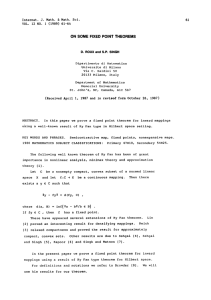

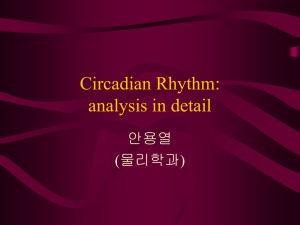
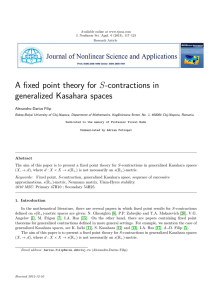
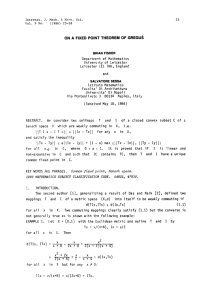
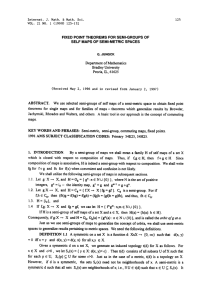
![5.5 The Haar basis is Unconditional in L [0, 1], 1 < 1](http://s2.studylib.net/store/data/010396305_1-450d5558097f626a0645448301e2bb4e-300x300.png)